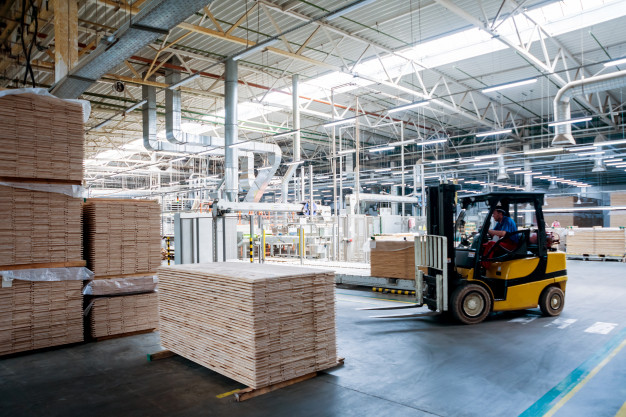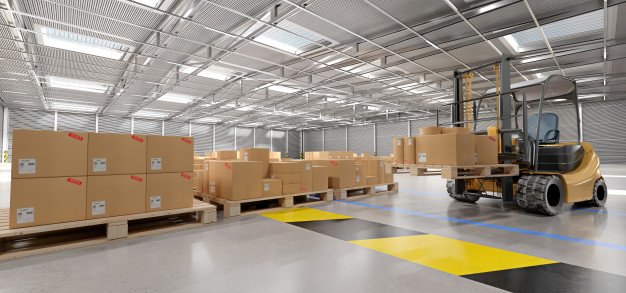Fundamentals of Warehousing Problems
The system of warehouse management is associated with six basic beliefs : Accuracy, cost control, efficiency, cleanliness, safety and security, of which the underlying processes are very complex as well as dynamic presenting major warehousing problems for warehouse managers across industries.
Distributors have to face a lot of challenges due to resource limitations, that leads to under performance in the main functional area.
Managers of the warehouse face the challenges of maximizing performance while balancing trade-offs under certain conditions.
This blog is based on the top warehouse management problems.
The process is extremely redundant.
Usually, warehouse employees have been likely to handle a product several times due to the nature of the warehousing process. This tendency waits on in current practices. One of the notable redundant processes in the warehouse is where warehouse workers pass the same ticket through multiple hands. Even though these processes are necessary, such unessential processes are very time consuming and result in increasing the cost labor. Use of a barcode streamlines the warehousing process, removing the redundant process, while maximizing resource utilization.

The process of automation systems are evolving very quickly, yet in a very steady manner. It has become a trend that compels warehouse managers to maintain up-to-date systems to achieve the desired results.
Layout is of Extremely Poor Quality
The use of space is extremely important, as it plays a critical success factor in warehousing. Some of the common problems in warehousing is poor facility layout. its adequate storage space and inefficient use of viable storage.
Poorly configured warehouse are a major cause for worry for the managers because of the inherent potential for negative impact on profits. The most favorable layout factors are both the floor space and the vertical space available for use. In addition to maximizing the use of space, a good layout maximizes the use of equipment’s and labor, accessibility to all items and the security of all items. Using forklifts that reach the roof of the warehouse allows for a configuration that maximizes both the horizontal and vertical space. The other solution is to ensure that the highest- selling inventory is easily available and accessible by placing it at the correct point.

Seasonality in Demand
There could be a fluctuation in demand. And this poses a serious challenge for warehouse managers. The fall back in sales, happened because of the recent global financial crisis resulted in major cost problems for warehouses due to increased inventory levels. Even though it did not affect all industries alike, the problem highlights the challenge of fluctuations in demand due to forces outside the control of the warehouse.
Timeliness and accurate information about manufacturing, retailing and the industry is very essential in managing seasonality in demand . Information gaps between the warehouse and other relevant entities or the industry limit the ability of the distributor to monitor and respond to changes in demand effectively. It is therefore essential for warehouses to use timely and accurate information in planning and forecasting demand as well as in providing supply chain visibility.
Rearrangement of products to match the changes in demand helps to minimize the negative impact of seasonal demand. Such an arrangement involves correct positioning of the items by placing the products with high demand during the current season at the front of the picking aisle and at the correct height.
Dealing with these warehousing problems that is seasonality in demand, a lot more about, then just about layout and picking. This problem requires proper management of transportation networks and strategic sourcing of transportation services. These long-term solutions build a lasting capability with strategic value for the distributor.
Labor Cost is extremely high.
Warehouse management makes sure to increase productivity. It also reduces the labour cost in a labor-intensive environment. Inbound logistics estimates that labor constitutes about 65% of the operating financial plans of most warehouses. A typical warehouse utilizes costly hardware and utilizes a large labor force, presenting a challenge that is generally extraordinary to warehousing operations.
The staff ranges from cleaners and packers to managers and administrative personnel. Attempts to reduce the cost of labor should take into consideration the impacts of the move on other costs. The two major strategies for addressing labor-related problems include maximizing available labor and replacing labor with automated systems.
Developing the right mix of expertise through workforce planning helps managers hone the skills necessary for successful labor force practices. A combination of the right skills and motivation, through practices such as excellent working conditions, training and flexible hours, enhances employee productivity and the performance of the warehouse.
Inaccurate Inventory
Accuracy and efficiency in handling inventory in warehousing go hand in hand. Inaccurate inventory causes problems, for example, maintaining ill-advised stock levels and developments of out of date inventory. Picking problems also arise when pickers depend on inaccurate information, leading to inefficient cycles. Different expenses of inaccurate stock information include increased expenses, lost revenue and low productivity. Automation is a key factor in solving accuracy-related problems.
Automated systems offer real-time, accurate information about stock levels and composition. The innovation utilized in managing inventory in a stockroom is basic to progress in light of the fact that the worth of the automated system is similarly on par with the nature of the actual system. A bad quality system holds a portion of the dangers related to inaccurate inventory. A cautious and educated choice interaction lessens the danger of acquiring an automation system that doesn’t address the issues of the distribution center.
Warehouses face increasingly dynamic environments as remote events in the global supply chain become more relevant to local business environments. The desirable approach when dealing with the challenges that arise due to new developments is to use inexpensive solutions that offer sustainable best practices. Warehouse managers should monitor and track changes in the business environment and adopt responsive solutions.
Common warehouse problems such as redundant processes, poor facility layout, seasonality in demand, high labor costs and inaccurate inventory information require robust systems that keep managers informed about changes and gaps that require attention.
These are some of the very essential, in a sense that these are the fundamentals that one should know about warehousing, in order to have a smooth and accurate warehousing system. Along with an easier inventory management system with it.
 Start using ZapInventory today
Start using ZapInventory today
